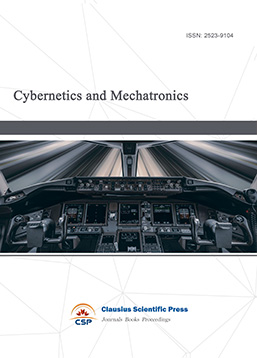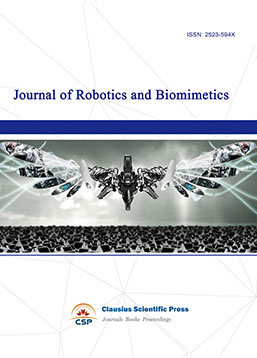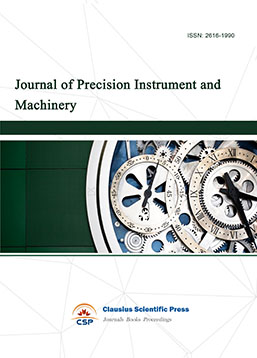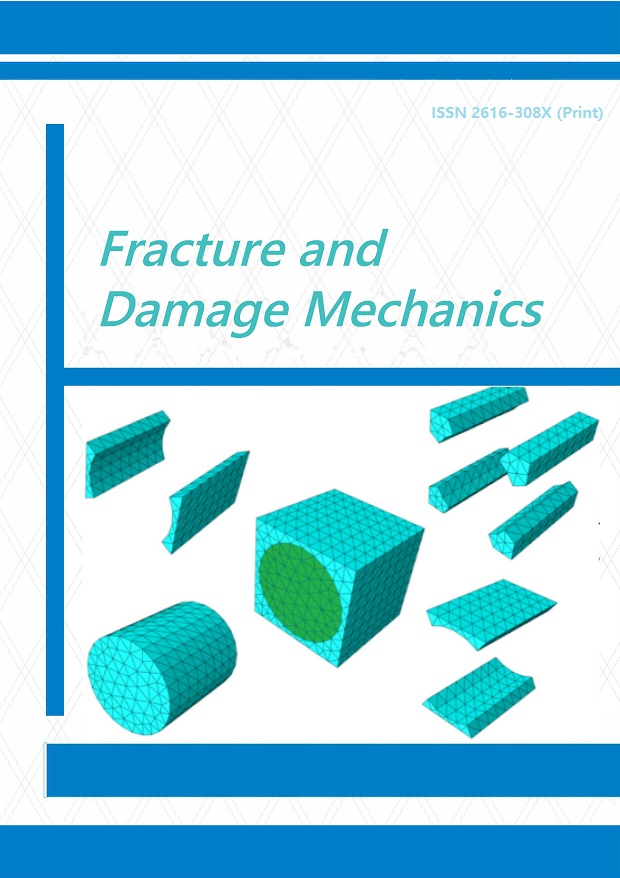Structural Design and Dynamics Simulation of Lower Limb Fitness Exoskeleton
DOI: 10.23977/jemm.2023.080414 | Downloads: 39 | Views: 1503
Author(s)
Lan Duan 1, Dongwen Li 1, Chengwei Bao 2, Xueming Qian 3
Affiliation(s)
1 Xi'an Technology and Business College, Xi'an, China
2 Northwestern Polytechnical University, Xi'an, China
3 Xi'an Technological University, Xi'an, China
Corresponding Author
Chengwei BaoABSTRACT
Human beings have given more attention to health as civilization has progressed. In this study, the structural properties of human lower limb joints and degrees of freedom in the lower limbs were investigated from a bionic perspective. The fitness exoskeleton structure of lower limbs was designed for exercising people's lower limb muscles and cardiorespiratory function by combining the functions, operating principle, and structural composition implemented by the exoskeleton. The fitness effect was obtained by applying loads to the elbow and knee joints and then overcoming them with leg movement. This exoskeleton, like any other typical human-computer integration system with bipedal walking characteristics, depends on human motion information to control the structure.
KEYWORDS
Lower limb exoskeleton; human integration; structural design; kinematic analysisCITE THIS PAPER
Lan Duan, Dongwen Li, Chengwei Bao, Xueming Qian, Structural Design and Dynamics Simulation of Lower Limb Fitness Exoskeleton. Journal of Engineering Mechanics and Machinery (2023) Vol. 8: 104-111. DOI: http://dx.doi.org/10.23977/jemm.2023.080414.
REFERENCES
[1] C.J. Walsh, K. Endo, and H. Herr, Quasi-passive leg exoskeleton for load-carrying augmentation[J]. International Journal of Humanoid Robotics, 2007,3(4):487-500.
[2] J.M. Veerbeek, A.C. Langbroek-Amersfoort, E.E.H. Van Wegen, Effects of robot-assisted therapy for the upper limb after stroke[J]. Neurorehabilit Neural Repair,2017,31(2):107-121.
[3] N. Rehmat, J. Zuo, W. Meng, Upper limb rehabilitation using robotic exoskeleton systems: A systematic review[J]. Int J Intell Robotics Appl, 2018,2(3):283-295.
[4] Y. Han, D. Hao, S. Yu, The Energy Amplification Characteristic Research of a Multimodal Actuator[J]. International Journal of Advanced Robotic Systems.2016
[5] Gabriel Aguirre-Ollinger, Exoskeleton control for lower-extremity assistance based on adaptive frequency oscillators: Adaptation of muscle activation and movement frequency[J]. Proceedings of the Institution of Mechanical Engineers, Part H: Journal of Engineering in Medicine.2015.
[6] B. Kalita, J. Narayan, S.K. Dwivedy, Development of active lower limb robotic-based orthosis and exoskeleton devices: a systematic review[J]. International journal of social robotics, 2021,13(4):775-793.
[7] A. Plaza, M. Hernandez, G. Puyuelo, Lower-limb medical and rehabilitation exoskeletons: a review of the current designs[J]. IEEE Reviews in biomedical engineering, 2023,16:278-291.
[8] SUN M W, OUYANG X P, MATTILA J. One novel hydraulic actuating system for the lower-body exoskeleton[J]. Chinese Journal of Mechanical Engineering,2021,34(1):1-10.
| Downloads: | 10974 |
|---|---|
| Visits: | 412719 |
Sponsors, Associates, and Links
-
Cybernetics and Mechatronics

-
Digital Manufacturing and Process Management

-
Ultra-Precision Machining Process

-
Journal of Robotics and Biomimetics

-
Prognostics, Diagnostics and Health Management

-
Micro-Electro-Mechanical Systems

-
Journal of Precision Instrument and Machinery

-
Engineering and Solid Mechanics

-
Fracture and Damage Mechanics

-
Frontiers in Tribology

-
Fluid and Power Machinery

-
Chemical Process Equipment

-
Journal of Assembly and Manufacturing

-
Mechanical Vibration and Noise


 Download as PDF
Download as PDF